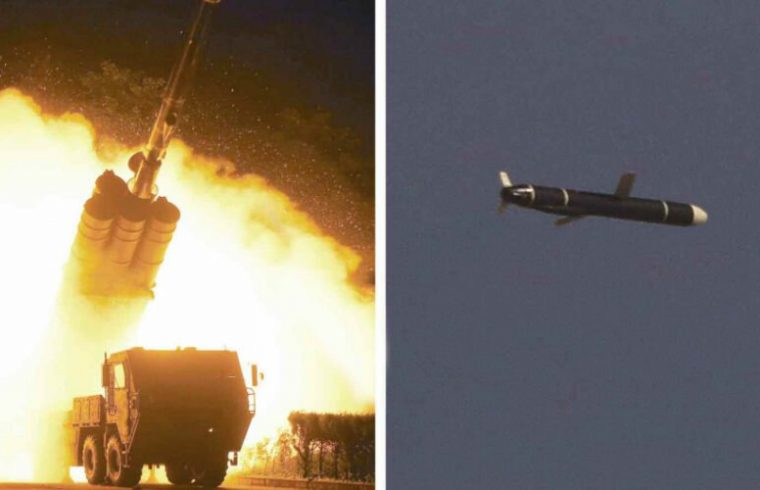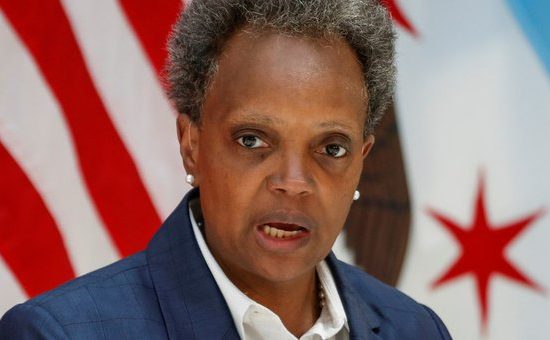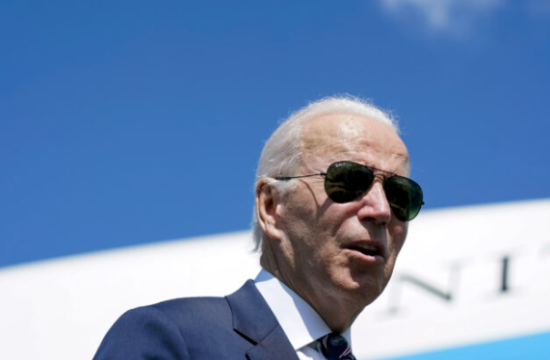North Korea announced Monday that it had successfully tested its new long-range cruise missiles. This was the first test activity in several months and demonstrates how the country is expanding its military capabilities despite a deadlock in the nuclear negotiations with the United States.
According to the Korean Central News Agency, missiles could hit targets up to 1,500 km (930 miles) on Saturday and Sunday. Photos of a projectile being fired out of a launcher truck were published by state media. Also, a photo showing what appeared to be a missile in the air was published.
The North described its missiles as a “strategic weapons of great significance” and implied that they were designed to be equipped with nuclear warheads.
North Korea claims it needs nuclear weapons to stop hostilities from the U.S., South Korea. It has tried for years to use the threat of such an array to obtain much-needed economic assistance or apply pressure. In the 1950-53 Korean War (which ended in an armistice but has not been replaced by a peace treaty), North Korea and its ally China faced off against South Korea, U.S.-led U.N. troops, and South Korea.
The international community is determined to get the North to give up its nuclear arsenal. To this end, they have used sanctions threats and economic assistance to influence the North. The U.S.-led talks on the nuclear issue are still in limbo after the fall of the summit between North Korean leader Kim Jong Un, and the then-U.S. president Donald Trump in 2019. The Americans rejected Kim’s request for significant sanctions relief in return for the dismantling of an aging nuclear facility.
North Korea ended a yearlong pause in ballistic tests in March by firing two short-range missiles into the sea, continuing a tradition of testing new U.S. administrations to measure Washington’s response. Kim’s government has rejected the Biden administration’s attempts to dialogue and demanded that Washington end its “hostile” policies first. This refers to the U.S. keeping sanctions in place and maintaining a military alliance.
To deter North Korea’s aggression, the United States has approximately 28,000 troops stationed in South Korea. This is a legacy from the Korean War.
Since March, there hadn’t been any test launches. Kim concentrated his efforts on fighting the coronavirus, salvaging the economy, and repairing the damage done by sanctions, flooding in recent summers and border closures during the coronavirus pandemic. Although experts have warned of dire economic conditions, monitoring groups have not yet detected signs of major instability or mass starvation.
Sung Kim, the special representative of North Korea for President Joe Biden, received the report. He was due to meet with his South Korean counterparts and Japanese counterparts in Tokyo Tuesday to discuss the stagnant nuclear diplomacy.
The Joint Chiefs of Staff stated that South Korea’s military was analyzing North Korean launches using intelligence from the United States and South Korea. After meeting with Australian foreign and defense ministers, Chung Euiyong, South Korean Foreign Minister, stated that the North’s resumption testing activity is a sign of the urgent need to revive diplomacy.
The U.S. Indo-Pacific Command stated that it was closely monitoring the situation with allies. It said that North Korean activities reflect a continued focus on “developing and presenting threats to its neighbors” and that Japan was “extremely worried.”
While the cruise missiles were clearly aimed at sending a message to Washington, the tests may indicate that the North is struggling with more provocative weapons systems and might not garner much of a response, said Du Hyeogn Cha, an analyst at Seoul’s Asan Institute for Policy Studies.
China, the North’s staunchest ally, didn’t comment on the missiles when asked. A spokesperson for its Foreign Ministry, Zhao Lijian, only urged “all parties concerned to exercise restraint, move in the same direction, actively engage in dialogue and contact” to reach a political settlement.
Kim doubled down his promise to increase his nuclear deterrent against U.S. pressure and sanctions at a Workers’ Party congress in January. Kim issued a lengthy wish list for new, more sophisticated equipment that included longer-range intercontinental missiles, nuclear-powered submarines, and spy satellites as well as tactical nuclear weapons.
KCNA stated that the missiles tested this weekend were able to travel for 126 minutes over North Korean territory before reaching their targets.
“In all, the efficiency and practicality of the weapon system operation were confirmed to be excellent,” it said.
Kim was not present to witness the tests. KCNA reported that Kim’s top military officer, Pak Jong Chon observed the tests and asked for defense scientists to do their best to improve the North’s military capability.
Katsunobu Kato, Japanese Chief Cabinet Secretary, stated that North Korean missiles with such a range could pose a serious threat to Japan’s peace and security and the safety of its surrounding areas.
He stated that Tokyo was working with Washington, Seoul, and Seoul to obtain information about North Korea’s recent tests. However, he said that there was no immediate evidence that the weapons had reached Japan’s exclusive economic area.
Kim’s powerful sister suggested that North Korea is ready to resume weapons tests while berating the United States for continuing its joint military exercises. She said it was the “most vivid expression U.S. hostile policies.”
Allies claim that their drills are defensive, but they have reduced or canceled them in recent years in order to make room for diplomacy or to respond to COVID-19.
The latest tests came after Kim threw an unusual parade last week that was a marked departure from past militaristic displays, showcasing anti-virus workers in hazmat suits and civil defense organizations involved in industrial work and rebuilding communities destroyed by floods.
Experts believe the parade was focused upon domestic unity, as Kim faces his most difficult test with an economy in disarray.












